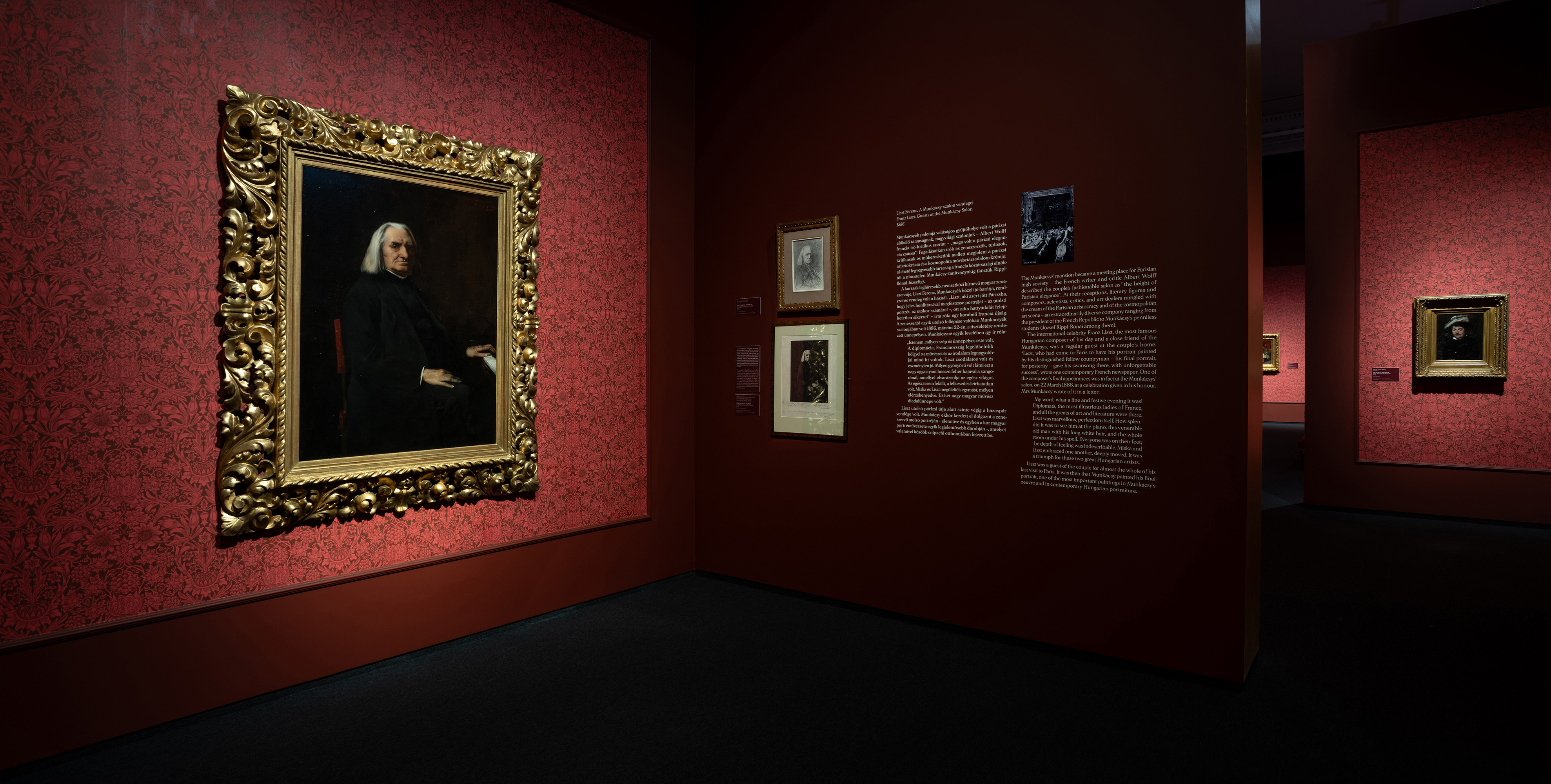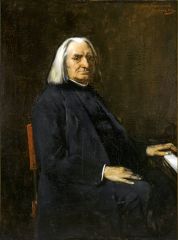In the late 1870s, having entered the world of the Parisian bourgeoisie and aristocracy, Munkácsy began to paint striking still lifes as well as salon genre scenes featuring luxurious interiors and ladies of society, in the wake of similar works by the extremely successful artists Mariano Fortuny and Alfred Stevens. Salon genre scenes were popular and fashionable in this period and depicted typical social events among the well-to-do.
Munkácsy's salon paintings were highly marketable at this time. For these compositions, he made use of the interiors and visual world of his own mansion. By this time, the artist's lavishly furnished home had become a representative space: the weekly opened Munkácsy salon was a venue for soirées, receptions, and musical and dramatic performances, although it also provided a setting for the artist to introduce his latest works to a selected audience. His salon paintings offered a glimpse into an exclusive milieu: the artist's admirers and collectors enjoyed seeing his charming soirées committed to canvas and were delighted to take such works home with them - a kind of unique souvenir of the opulent world to which it was an honour even to be invited. This explains the enduring popularity of the salon paintings, as the simultaneous representation of both intimacy and worldliness.
Depictions of reverie, featuring women or children dreaming, pensive, half-asleep, or slumbering, form a separate group among the intimate bourgeois genre paintings that were so fashionable in this period. Munkácsy, too, had a predilection for this theme, as did his French contemporary, James Tissot, who likewise became famous for works depicting the everyday lives of the French elite.
Munkácsy produced his salon paintings at the insistence of the art dealer Charles Sedelmeyer, a man with a remarkable flair for marketing, and – like the Christ paintings - they contributed to the construction of the Munkácsy brand. Most ended up overseas, acquired for famous private collections in America, many of them in New York.
 Munkácsy
Munkácsy



